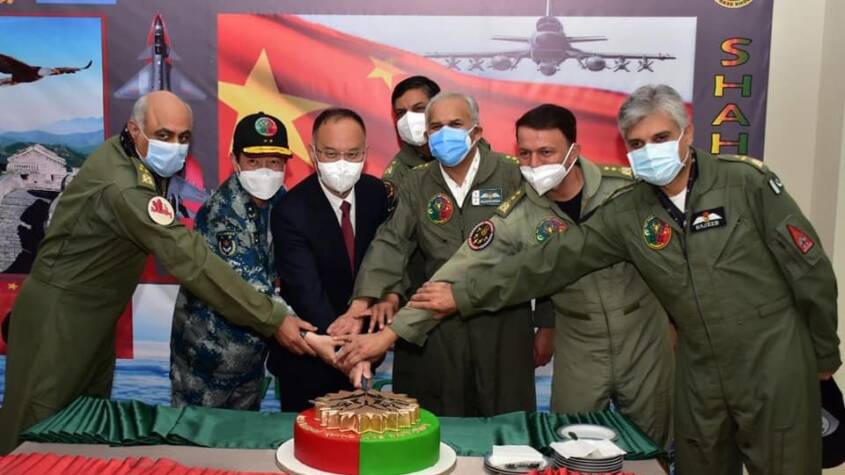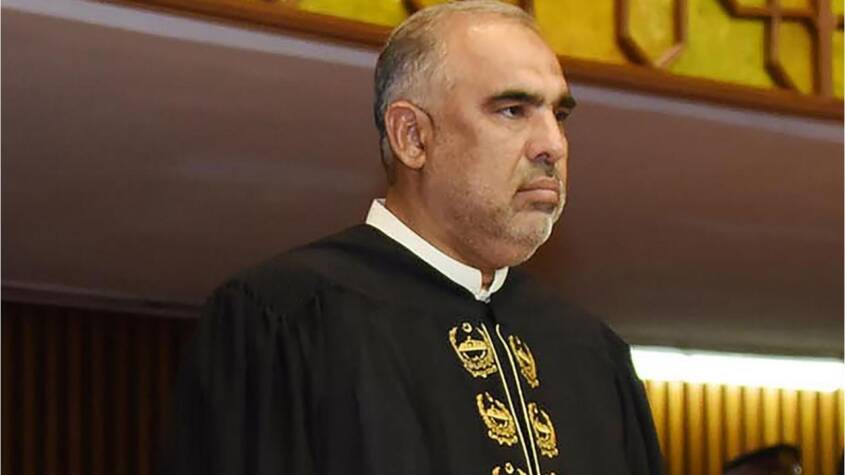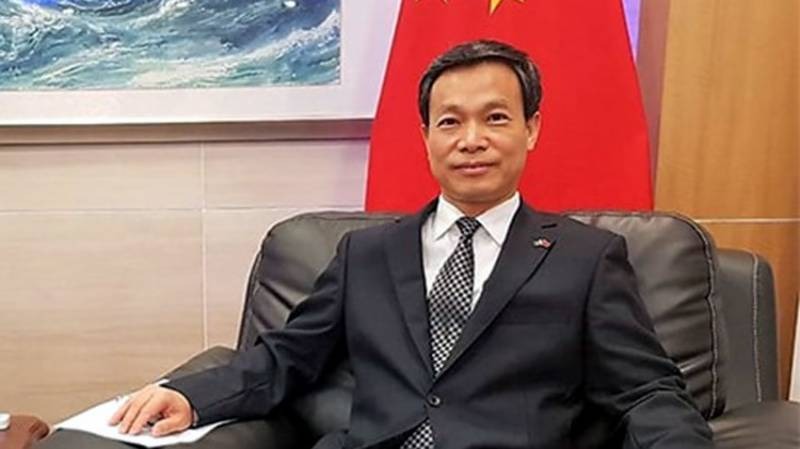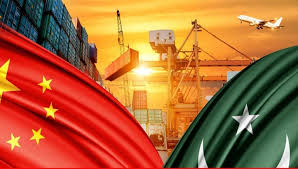Mehmood Ul Hassan Khan
Chinese One Belt & One Road Initiative has become sign of economic recovery, strength, stability and of course sustainability in all the member countries although internal economic fault lines and limited capacity building mechanism are one of the main impediments of it. That is why BRI has been advocating and reaching out the needy countries to first rectifies its intrinsic economic flaws.
The concept of BRI is not out of the blue moon. It has been characterized in various economic policies and strategic orientations of China for the last so many years.
It has been an ideal combination of Chinese’s robust domestic economic growth and its regional and global planned expansion for achieving a befitting grand economic road map and model to trigger countries and communities from impasses economic slums towards economic surpluses through infrastructure development, greater regional connectivity and immense socio-economic integration. In this context, the Western Development Program (WDP) (1999) and the “China Goes Global” plan (CGC) (2000) had some basic futuristic origins of the BRI.
It seems that the BRI follows the “infrastructure diplomacy” initiated by China in the 2000s. Afterwards, the BRI has succeeded in mobilizing every economic actor in China.
Right from the beginning the BRI’s signature program has been infrastructure connectivity, aiming to finance and construct large infrastructure projects that link China with Southeast, South, and Central Asia. Critical analysis reveals that BRI concept was not new; China had conducted “infrastructure diplomacy” since at least 2008.
In this connection, the Chinese Ministry of Foreign Affairs (MFA) had proposed mutual connectivity projects in the Shanghai Cooperation Organization (SCO) framework in Central Asia and ASEAN Plus Three (APT) framework in Southeast Asia.
Infrastructure proposals by MFA, however, did not go much further, as it had no access to project reserves at Chinese banks, nor the power to orchestrate financing and construction of infrastructure, which belonged to the National Development and Reform Council (NDRC) and China Development Bank (CDB).
Meanwhile, China’s domestic overcapacity intensified in 2010, and its infrastructure diplomacy was raised to a new height by its visionary leaders. At the China-ASEAN Leaders’ Summit, former Chinese Premier Wen Jiabao pledged to “provide loans to establish a China-ASEAN Infrastructure Cooperation Fund.
In particular, in Indonesia, Wen announced that China would disburse $1 billion in concessionary loans and $8 billion in development financing to help the country’s infrastructure needs. Then President Hu Jintao pushed for similarly strong infrastructure ideas.
In this regard, at an APEC summit in Russia in 2012, Hu offered a concrete plan for infrastructure development in Eurasia in a speech titled “Deepening Mutual Connectivity and Realizing Sustainable Development,” stating that “infrastructure is the basis for economic development; connectivity is critical to trade integration; and Asian leaders need to promote communication and cooperation across borders.
It is obvious that before Xi’s Belt and Road announcements, former Premier Li was an active promoter of infrastructure in Asia and China’s commitment to invest in it. In May 2013, while visiting Pakistan, Li announced that China would invest $14 billion in 36 projects covering energy, roads, and telecommunications in the country.
In this direction, actual infrastructure investment had also been strident before the BRI. In 2011, China provided $15 billion in concessionary loans to support 50 projects including highways, railways, water, energy, telecommunications, and electricity linking China and ASEAN. Cross-border rail and highways projects connected border capitals such as Nanning and Kunming with Hanoi and Singapore, respectively.
When ASEAN members founded the ASEAN Infrastructure Fund (AIF) in 2012, Chinese diplomats attempted to expand it into an East Asian Infrastructure Fund (EAIF) but could not include Japan and other “unfriendly” nations. Ultimately Chinese president Xi formally announced BRI in 2013.
The concept of Chinese Marshall Plan remained in news during 2009 which could serve as a medium to long-term strategy to disburse foreign aid and foster international cooperation. Chinese leadership proposed that China spend $500 billion to set up a “Harmonious World Plan” by providing aid and loans to Asian, African, and Latin American countries. The plan, according to Xu, would boost Chinese exports, reduce industrial overcapacity, accelerate renminbi internationalization, and advance China’s global influence.
From 2010 to 2012, tension in Maritime Asia was rising fast. The US excluded China from a regional grouping, the Trans-Pacific Partnership (TPP), and was seen as creating de facto geostrategic encirclement around China. Wang Jisi proposed “China goes west” as a way to promote strategic rebalancing and prevent a US-China direct clash in Maritime Asia.
Wang’s strategy was quite popular in Beijing foreign policy circles. After the launch of BRI, security specialists in Beijing claimed that “China goes west” had been the forerunner of the BRI.
The process from the BRI announcement to consolidation as a national strategy, roughly from 2013 to 2015, demonstrates how the strategy empowered the Chinese dynamic state. During this juncture, various state agencies, particularly those with resources and preexisting projects in line with the BRI received a major boost to their efforts. The BRI became a mobilization campaign, in which different government agencies inserted their policy ideas and made the messages in the strategy more concrete.
In line with preexisting policy ideas and practices, the Ministry of Foreign Affairs, supported the BRI strongly and argued that the strategy would integrate China’s own development with Asian regionalism through policy coordination, road connections, trade facilitation, currency exchanges, and communication of public opinion.
On its part, the NDRC publicized its action plan for BRI construction, in which investment, manufacturing, cross-border industrial parks, energy trade, and infrastructure were “the priority of the priorities. On the other hand, the State Council think tank Development and Research Center (DRC) advocated that the BRI jointly develop coastal, central, and western China, while improving Asia’s overall economic competitiveness in the world.
To conclude, the BRI represents a new era economic diplomacy in China and advocates a series of geostrategic-conscious Free Trade Areas (FTAs) and other associated economic cooperation among all the member countries. It has strategic significance, tying construction of a new Silk Road with the revival of China’s former place in the world. It advocates the BRI to connect land and maritime transport, deepen regional integration, and expand the geostrategic space for China’s rise.
Ultimately, it borrows holistic policies of Chinese president Xi mainly Global Development Initiative (GDI), Common/shared Prosperity (CP) and Global Community Development (GCD) and has become a symbol of economic sustainability without any conditions or especial geopolitical designs.
Rapidly changing socio-economic, geopolitical and geostrategic trends in the region and beyond urge policy makers of China to further transform BRI in accordance with the new conflicting realities especially imposition of unilateral socio-economic and geopolitical sanctions against Russia. In this connection, China-EU strategic partnership should also be reviewed and pursued to make breathing space for the member countries of BRI especially in Central Asia and South Caucasus regions.

















